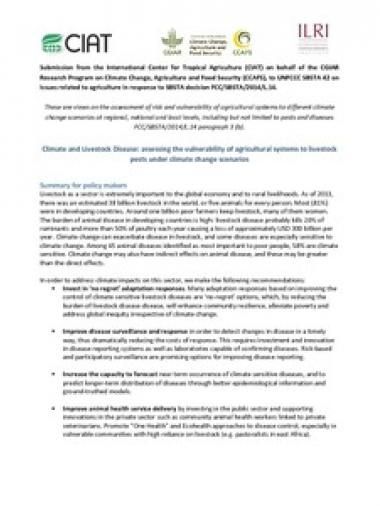Climate and Livestock Disease: assessing the vulnerability of agricultural systems to livestock pests under climate change scenarios

Livestock as a sector is extremely important to the global economy and to rural livelihoods. As of 2013, there was an estimated 38 billion livestock in the world, or five animals for every person. Most (81%) were in developing countries. Around one billion poor farmers keep livestock, many of them women. The burden of animal disease in developing countries is high: livestock disease probably kills 20% of ruminants and more than 50% of poultry each year causing a loss of approximately USD 300 billion per year. Climate change can exacerbate disease in livestock, and some diseases are especially sensitive to climate change. Among 65 animal diseases identified as most important to poor people, 58% are climate sensitive. Climate change may also have indirect effects on animal disease, and these may be greater than the direct effects. This submission was prepared by Delia Grace, Bernard Bett, Johanna Lindahl, and Timothy Robinson at the International Livestock Research Institute (ILRI), Nairobi, Kenya, with support from the CGIAR research program on Climate Change, Agriculture and Food Security (CCAFS).
Citation
CIAT-CCAFS. 2015. Climate and Livestock Disease: assessing the vulnerability of agricultural systems to livestock pests under climate change scenarios. Submission to UNFCCC SBSTA 42 on issues related to agriculture in response to SBSTA decision FCC/SBSTA/2014/L.14.